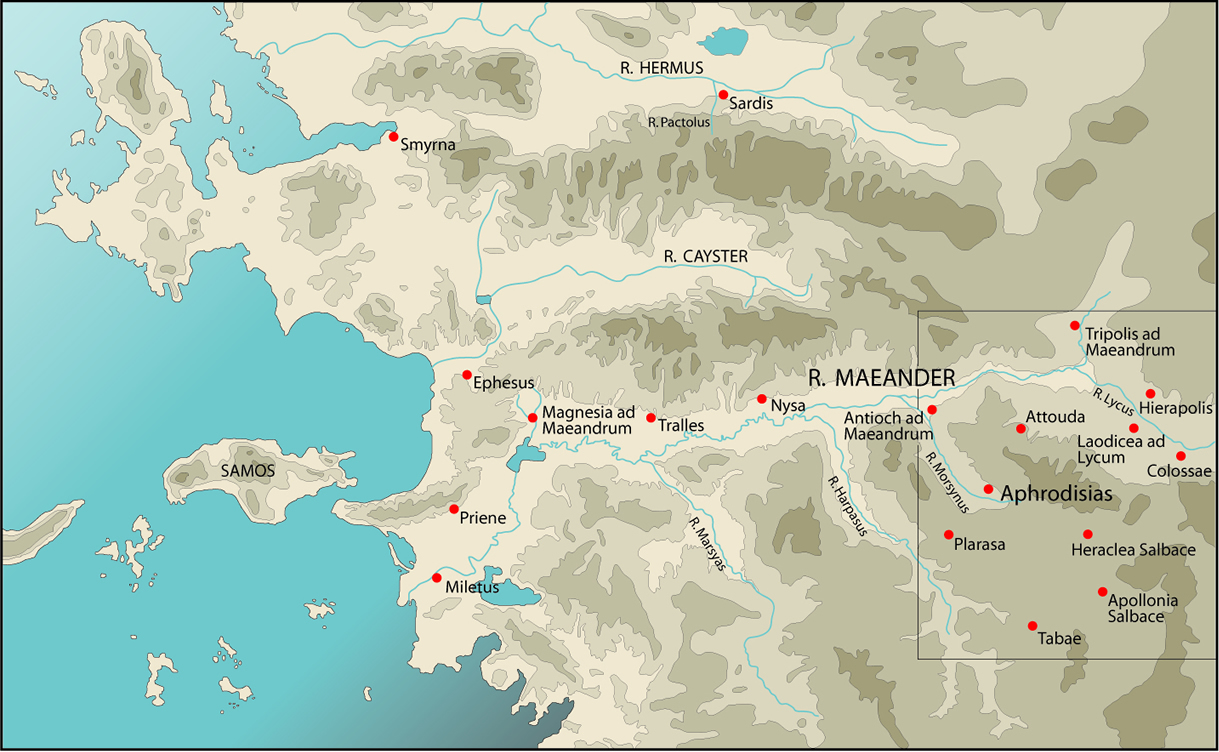History

Aphrodisias was a free and autonomous city within the Roman province of Asia. It was best known for the sanctuary of its patron goddess, Aphrodite, and for its marble sculptors. The community prospered under the early and middle Roman empire (first-second centuries AD), when it built the complete set of marble buildings that made the town a proper city in ancient eyes. In the later third century, Aphrodisias was chosen to be the capital, the metropolis, of a new Roman province of Caria, and was able in the late antique period (fourth-sixth centuries) to maintain its classical life and fabric until the widespread urban collapse of the early seventh century.
The Aphrodisians created a spectacular marble city and an astonishing abundance of high-quality marble sculpture and statuary. The settlement was fortunate in its relative isolation from the main through-roads of medieval and modern Anatolia, and it is due to this circumstance that the city and its sculpture are uniquely well preserved. Aphrodisias is the best place to study the vigorous marble culture of the Roman period in Asia Minor.
Aphrodisias was, in ancient terms, a medium-sized town (72 hectares, with a population of maybe 10,000 inhabitants), but one with a metropolitan grandeur of architectural design. Its monuments and marble sculpture define a distinctive period of ancient city life. After the international political turmoil in the Mediterranean (the Roman Revolution) of the first century BC, the city’s engagements with outside events were few. We have an archaeological and epigraphic history of a thriving local community, whose inscriptions, statues, and buildings were their history. In this period, civic benefaction and honorific rewards (statues, tombs) became the very stuff of local politics.






